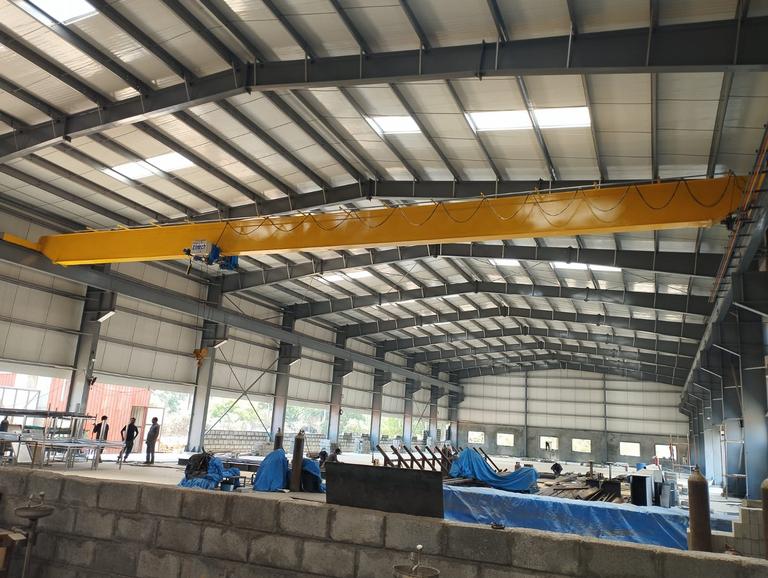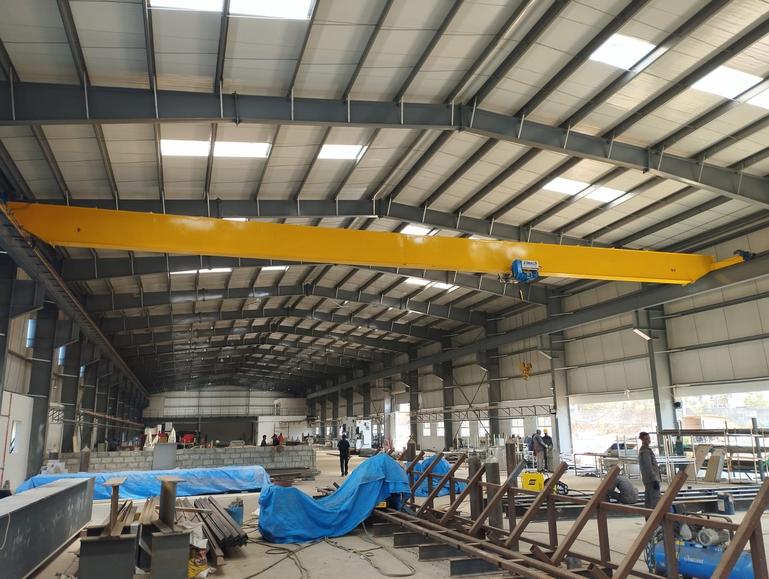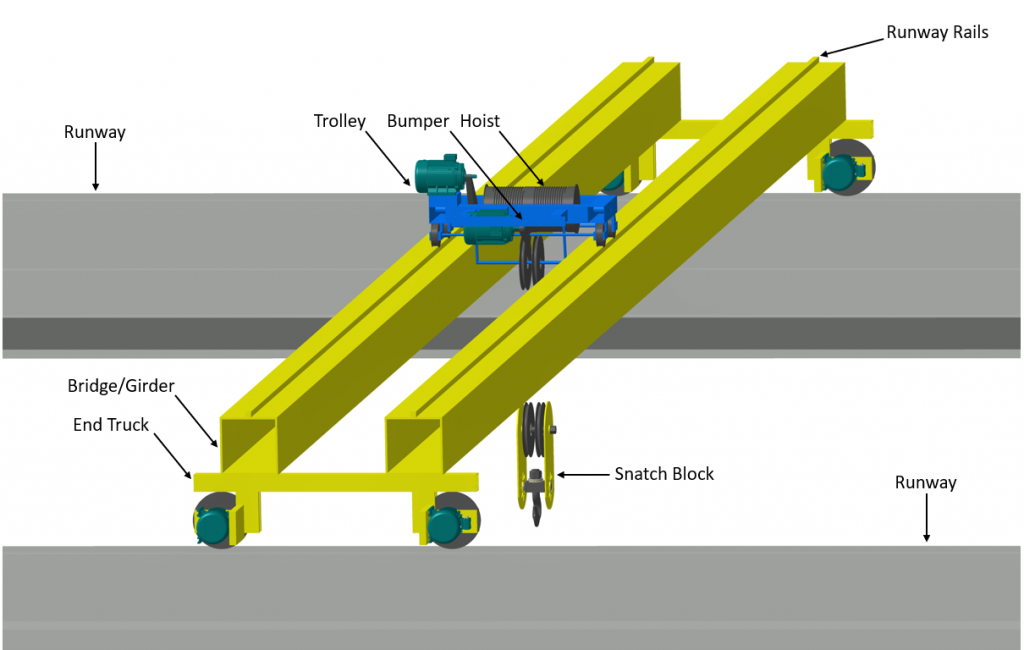About EOT
A crane is a machine which can raise, lower and maneuver objects from one place to another. An overhead crane consists of the following three primary motions: 1. Motion of the hoist (vertical travel), which raises and lowers the load. 2. Motion of the trolley (cross travel) – which allows the hoist to be positioned above the load and 3. The gantry or bridge motion (long travel) – which allows the crane to cover the working area.
Types of Electric Overhead Cranes
Single Girder Cranes – This type consists of a single bridge girder supported on two end trucks.
Double Girder Cranes – This type consists of two bridge girders supported on two end trucks.
Gantry Cranes – The distinction of Gantry cranes from other types is that it is rigidly supported on two or more legs running on fixed rails or runways.
Monorail – These cranes generally consist of a hoist supported by a single I beam with long travel motion of the bridge.
Common Terms and Components
Bridge / Girder – It is one of the principal structural components of an overhead crane which spans the width of the building. The bridge carries the hoist which travels along the length of the girders during operation.
Duty or Service Class / Group – are a set of service classifications based on the frequency of use and percentage of lifts at or some fraction of rated capacity.
End Trucks – These are located on either side of the bridge and consist of the assembly on which the entire crane travels. The assembly consisting of structural members, wheels, bearings, axles, electric drive motors, etc.
Rated Capacity (RC) or Safe Working Load (SWL) – The rated capacity is the maximum working load that can be lifted by a crane usually expressed in tons. Note: The terminology – Safe Working Load is now obsolete for legal implications.
Runway – The track on which runway rails are mounted. They are usually a part of the building structure.
Runway Rails – These are rail beams on the girders upon which the crane trolley travels.
Hoist – The hoist is responsible to raise, hold and lower the maximum rated load. It consists of motor drive, coupling, brakes, gearboxes, rope drum, etc.
Trolley or Crab – It is the cross-travel unit which accommodates the hoist from which the lifting hook is lowered and raised. The trolley also facilitates lateral movement on the runway rails.
Bumper – it is an energy absorbing mechanism or device intended for reducing the impact of a moving crane or trolley when it hits the stops.
Long Travel – This is the motion of the bridge or girder(s) on the runway.
Cross Travel – This is the motion of the trolley or crab along the bridge/girder.
Hook Height – This is the distance from the datum to the highest position of the hook.
-

Electric Overhead Traveling Crane -

Electric Overhead Traveling Crane -

Electric Overhead Traveling Crane

